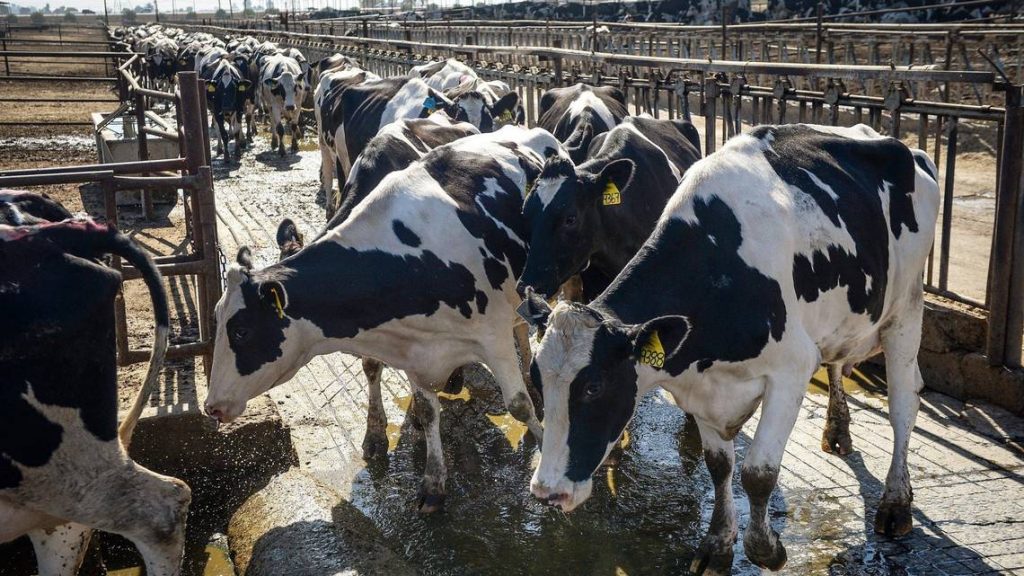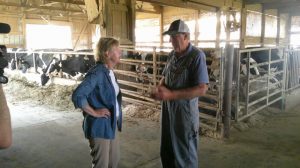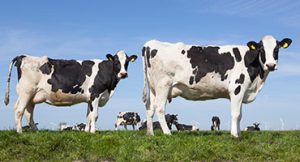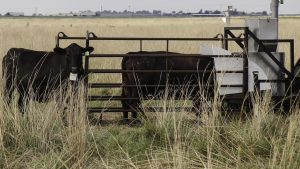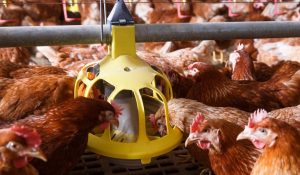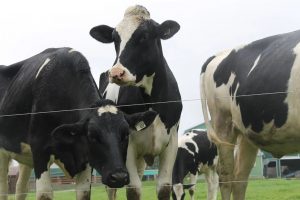
A blistering hot summer coupled with a never before seen virus in dairy cattle, has caused more cow deaths than anticipated in California, according to statewide dairy expert.
The avian flu, a devastating virus to poultry, crossed over to a dairy cow this spring, triggering an outbreak that has spread to 14 states and most recently to California, the largest dairy state in the nation.
As scientists, veterinarians, and dairy operators continue to try and slow the spread, it has taken its toll on the state’s $8 billion industry from greater mortality rates to a one-time backup at the region’s rendering plant.
Although most cows recovered from the virus after about two weeks, about 1% to 2% of the animals did not. The animals either died from the virus or were culled because they could not produce enough milk.
Dairy analysts said it is too soon to say if the price and supply of milk will be affected.
California, the top milk producer in the nation, began to see much larger numbers as the center of the state’s dairy industry, the San Joaquin Valley, struggled through record-breaking temperatures.
Michael Payne, a food animal veterinarian with the UC Davis Western Institute for Food Safety and Security, estimates the combined total of on-farm cow deaths, plus culling, is around 10% to 15% in California.
Payne said he spoke with several veterinarians who have treated herds in California and other states and there is a “general agreement that this summer’s Central Valley heat waves resulted in more severe disease and higher mortality then the vets saw in cooler months in other states.”
“Some farms have fared better than that, some worse,” Payne said.
Tulare County dairy operator Tom Barcellos feels like he’s dodged a bullet as the Avian flu continues its march across the state, infecting 114 herds as of Friday.
Barcellos, who farms in Porterville, has 1,600 cows on his dairy and has only had to deal with a small number of infections, crediting his strict bio safety standards for the low numbers.
The avian flu causes cows to become lethargic, eat less and produce less milk. Sick cows must be separated from the rest of the herd until they have recover.
“For us, we are seeing the light of the end of the tunnel with our milk production rebounding to earlier levels,” Barcellos said. “But as we are finding out, there are going to be darker days for others.”
One dairy operator with more than 3,000 cows had half of his herd sick with Avian flu, said a dairy owner who asked not to be identified.
The loss in milk production can run into the hundreds of thousands of dollars, said Anja Raudabaugh, chief executive officer of Western United Dairies, an industry group.
Also a problem, is the drop in milk production from cows that do not fully recover from the flu. In those extreme cases, the cow is culled from the herd.
“We are culling much higher than other states, it is a massive lost and we can’t put those cows into the beef supply chain,” Raudabaugh said.
Farmers are faced with having to dispose of the cows by sending them to the rendering plant. In the Valley, Baker Commodities operates the nearest rendering plant.
At the peak of the heatwave, more cows were dying than the rendering plant could handle and in one case nearly a dozen cows were stacked up outside of a Tulare County dairy.
Veterinarian Crystal Heath, an anti-factory farming activist, was touring the area examining the condition of the cows when she came across the pile of carcasses. She took several pictures and videos and sent them to media outlets.
“I was shocked,” she said. “Dogs, cats or some other wildlife could have come in contact with these cows. They should have been covered with a tarp or a sign that said the cows had avian influenza.”
Jimmy Andreoli II, assistant vice president at Baker Commodities, confirmed that the heat wave caused a sudden rise in the number of cows needing to be picked up, but it was a temporary problem.
Baker operates two plants in the area, one in Kerman and the other in Hanford.
“While some routes have required temporary adjustments, such as shifting from daily to every-other-day pickups in certain areas due to the overwhelming volume of fallen animals and the extra time required for sanitization procedures, we are confident that our procedures, guided by regulatory recommendations, will allow us to continue supporting the dairies and protecting the integrity of the food chain,” Andreoli said in a statement.
You can now read the most important #news on #eDairyNews #Whatsapp channels!!!
🇺🇸 eDairy News INGLÊS: https://whatsapp.com/channel/0029VaKsjzGDTkJyIN6hcP1K
